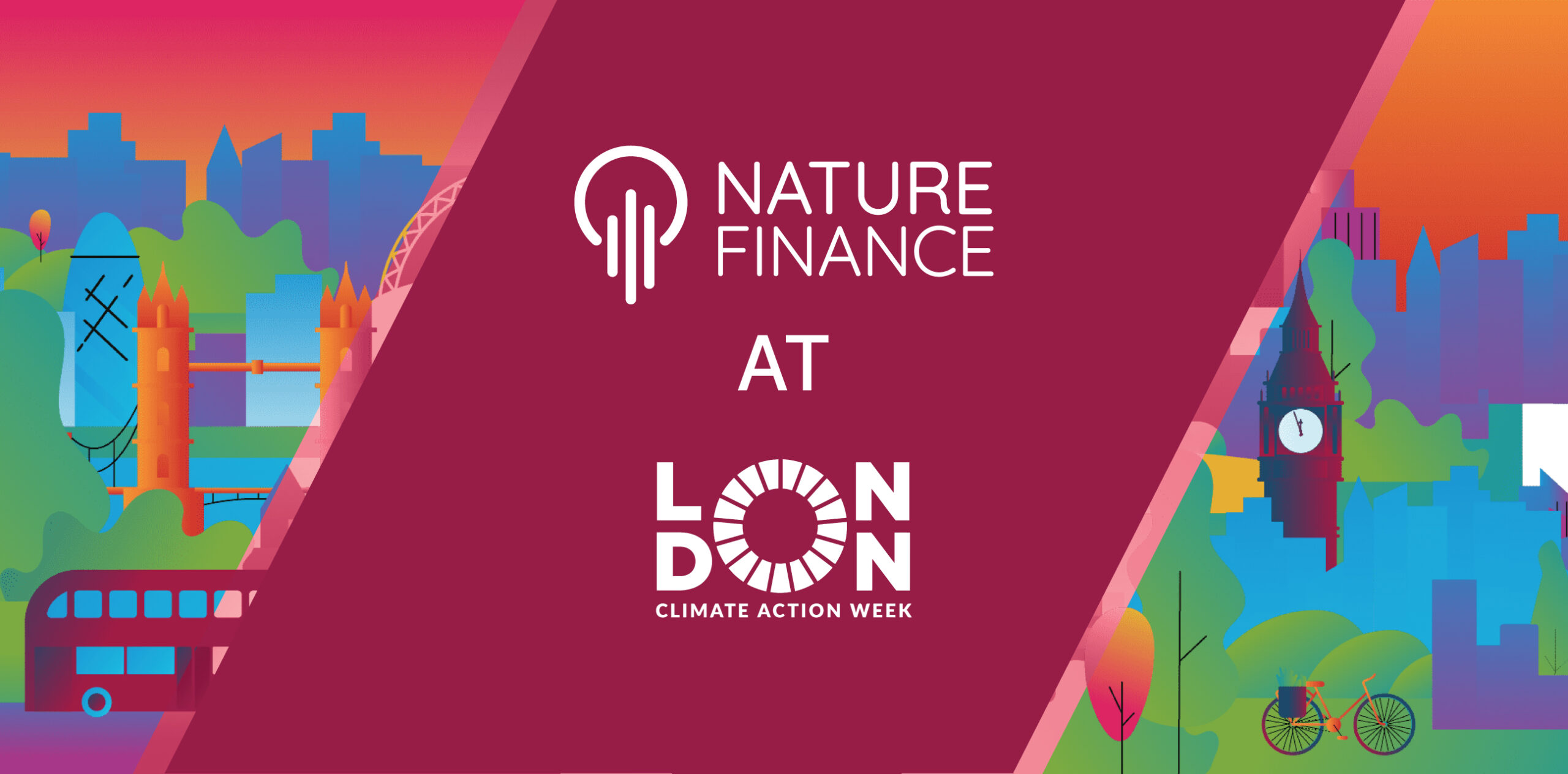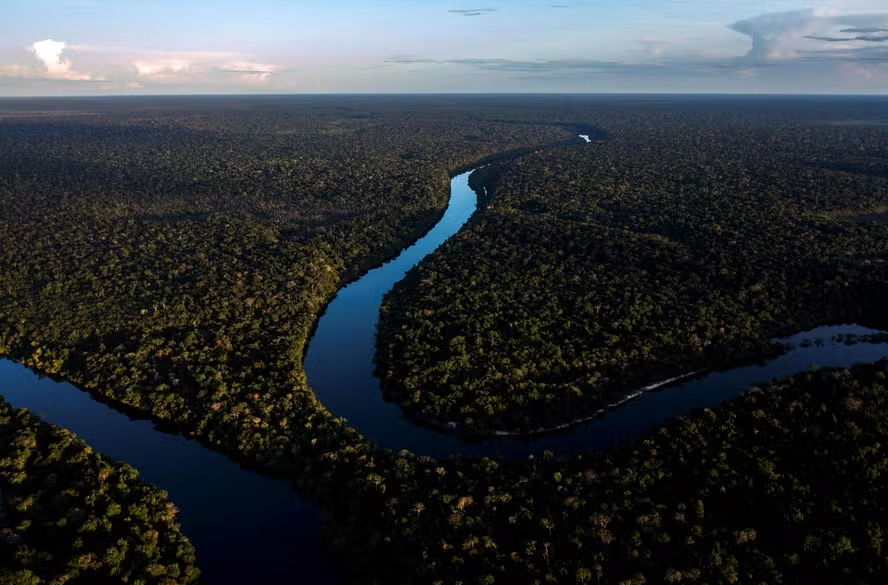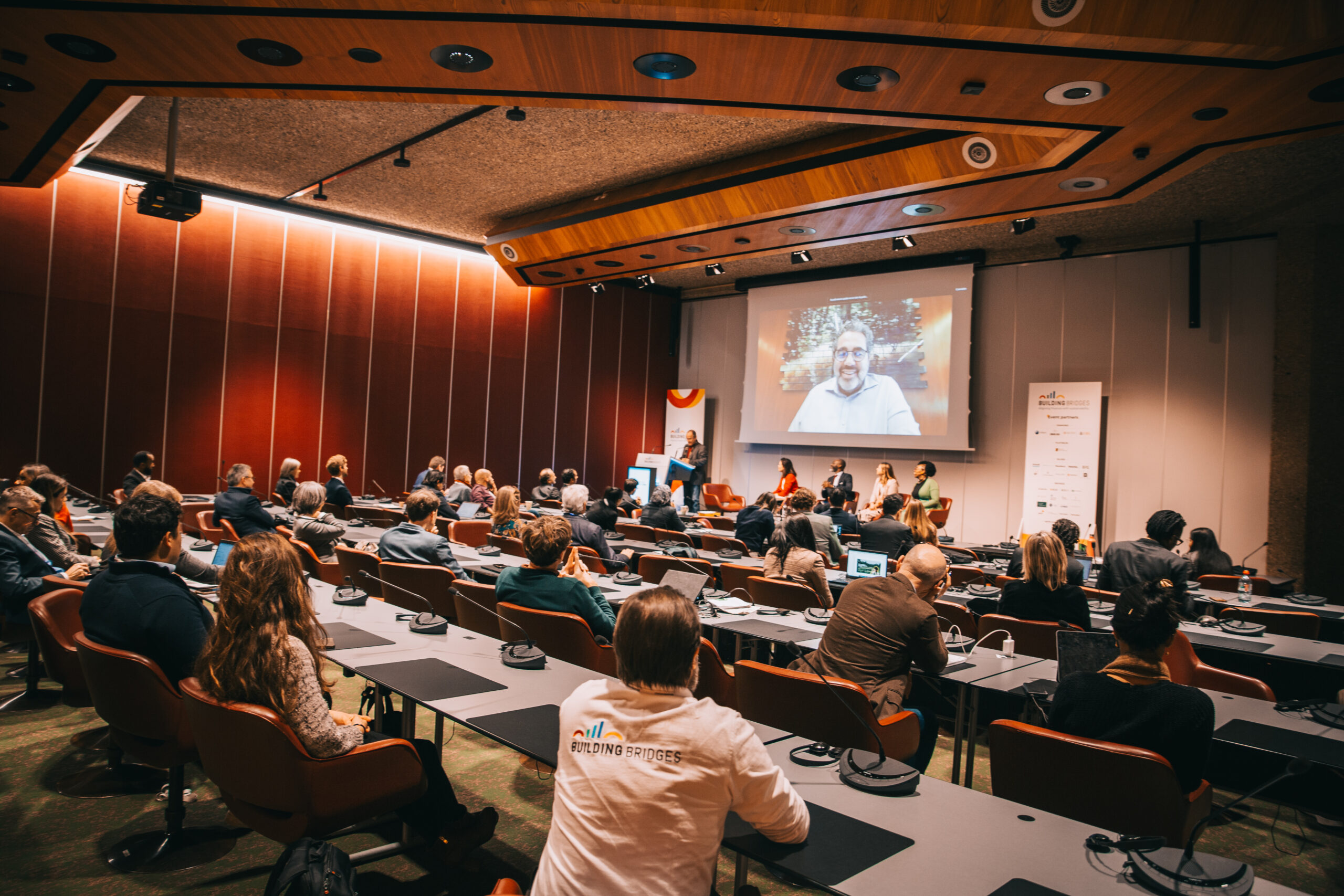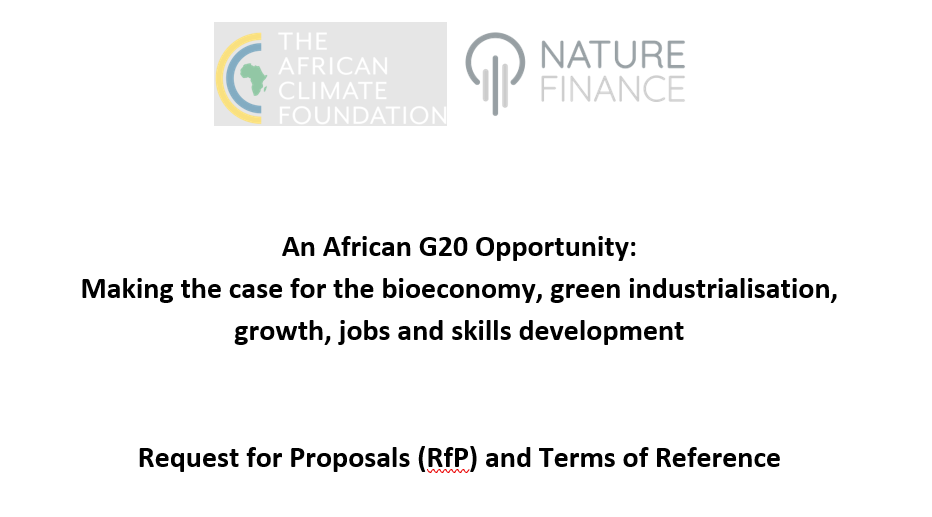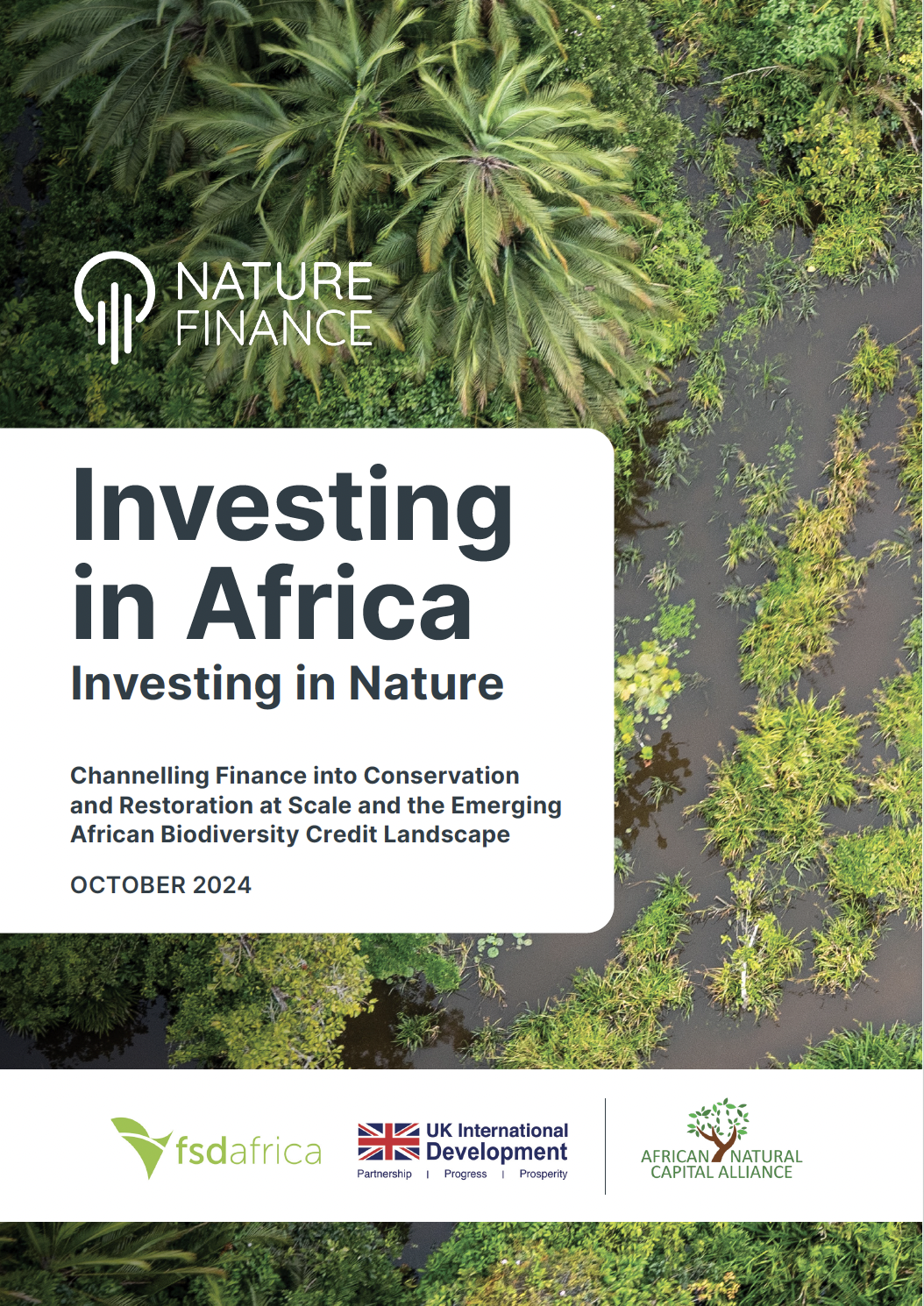- Financing the transition to a net zero, nature positive global economy requires funding of at least US$100 trillion by 2050, and sovereign debt markets are a central part worth US$88 trillion.
- Sovereign debt markets must innovate if they are to support the financing of this transition. Performance-linked debt instruments provide a solution to the challenge.
- South Africa proposal for a performance-based mechanism to support its transition away from coal highlights this wave of innovation, and the potential way forward for sovereign debt markets to innovate.
London, Thursday 3 March 2022 – Sovereign bond markets need to quickly and radically innovate in order to successfully integrate climate- and nature-related risks, and therefore finance the transition to a net zero, nature positive world, finds a new report from NatureFinance (formerly known as Finance for Biodiversity (F4B)). The report also sets out why more and more issuers and investors are using performance-linked debt instruments, such as sustainability-linked or key performance indicator (KPI) instruments.

Valued at US$88 trillion, sovereign debt markets are a critical part of the global financial system, and from which much of the unprecedented investment flows of capital (c. US$100 trillion by 2050) required to finance the transition to a net zero, nature positive global economy must come.
F4B’s new research – Greening Sovereign Debt Performance: Shared Risk and Rewards in Financing the Transition – finds, however, that current efforts to value natural capital and price sovereign risks and opportunities are ad-hoc, fragmented, and small-scale. Moreover, sovereign debt markets are not keeping pace with the speed of innovation – often seen in other asset classes – that is required to best serve the needs of issuers and investors.
This comes at a time when the cost of capital for countries is increasingly driven by their climate vulnerability. Climate- and nature-related risks have the potential to cause volatility and raise the chance of default, especially in emerging markets, and the impact of the COVID-19 pandemic has exacerbated the fragility of some sovereign debt markets. Indeed, in 2020, US$443 billion of government debt went into default, up 48% on 2019, driven by the inability of Argentina, Belize, Ecuador and Suriname to meet debt repayments.
F4B’s research describes how, by pricing natural capital into financial decisions, markets would begin to allocate capital towards investments aligned with a lower risk, low carbon, nature positive transition. It argues that accelerating the integration of nature and climate into sovereign debt markets would not only mobilise much-needed transition financing, but would also help to build out a shared risk and reward approach between issuers and investors. To achieve these objectives, F4B explores why a greater use of instruments such as sustainability-linked or KPI sovereign debt would connect substantiality outcomes (such as water or biodiversity) to the cost of debt.
Debt instruments such as these are being discussed with increasing frequency globally. For example, in September 2021, Belize stuck a deal to restructure its debt in exchange for significant funds for ocean conservation, and South Africa has put forward a proposal for a performance-based debt mechanism in order to support its transition away from coal. Moreover, at least 50 sustainability-linked bonds have been issued in corporate debt markets worth a combined US$30 billion. The likelihood of this wave of innovation spreading to sovereign debt markets is now high, pointing to a new era of sustainable financing options for sovereigns. This performance element already applies in the private sector, with tangible evidence of alignment to incentives.
Rupesh Madlani, F4B Principal said: “Sovereign debt markets are poised to innovate, to better reflect nature and climate outcomes in new issuance through KPI-linked structures. For issuers, investment banks and investors this represents a wave of innovation that will usher in a new era of sustainable financing options in this key asset class.”
Simon Zadek, Chair, F4B said: “More than US$300 billion has been invested in fossil fuel exploitation since the beginning of the pandemic, and three-quarters of sovereign bond prospectuses issued in 2020 did not disclose any climate- or nature-relate risks. We need a fundamental change in the way sovereign debt markets operate. Thorough integration of natural capital considerations and scaling-up the use of performance-linked instruments is urgently needed to both address the debt crisis, and finance the transition to a net zero, nature positive world.”
Thomas Lambert, Managing Director, Lazard Sovereign Advisory Group said: “This is a very timely report as the sovereign debt market is at a tipping point with regard to climate and nature risks. As advisor, at Lazard, to many governments in the fiscal and debt management space, we welcome F4B’s analytical contribution to the effort to integrate the international sovereign debt market into modern green finance.”
Sonja Gibbs, Managing Director and Head of Sustainable Finance, Institute for International Finance (IIF) said:“The meteoric rise in sustainable investment and acceleration in net zero commitments are transforming global fixed income markets. Debt securities that embed ESG considerations, such as sustainability-linked bonds, are seeing tremendous growth and innovation. By linking returns to the performance of governments and corporations on key environmental and social outcomes, these new markets enable investors to fulfil both financial and non-financial goals, including climate change mitigation and protection of biodiversity. This report by F4B highlights key innovations that will help scale ESG markets, allowing investors to better price climate and environmental risks – and opportunities.”
Fiona Stewart, Lead Financial Sector Specialist, Finance, Competitiveness & Innovation, World Bank said: “We very much welcome the report and the light which F4B is shining on the links between natural capital and sovereign debt markets. Our own research at the World Bank has found that natural capital is indeed the key missing link in sovereign debt analysis – and we agree that performance-based financial instruments can be a catalyst for recognising its value. We look forward to continuing to work with F4B and partners to support the emerging market countries which are the stewards of these global public goods.”
Malik Amin Khan, Advisor to Prime Minister of Pakistan on Climate Change & Global Vice President, International Union for Conservation of Nature (IUCN) said: “Nature KPI bonds represent an important new financial instrument with the potential to catalyse and accelerate action on climate and nature protection, while at the same time lowering the cost of capital for the borrowing country. Pakistan, already committed to ambitious actions in both the climate and nature space, is very interested in nature KPI bonds as a way to incentivise and accelerate climate resilience, and consolidate a solid foundation for nature and ecosystem restoration.”
‘Greening Sovereign Debt Performance: Shared Risk and Rewards in Financing the Transition’ makes a number of key recommendations to accelerate the integration of nature and climate into sovereign debt markets. These include:
- Developing a coalition of nature, climate and sovereign debt experts to build a KPI (key performance indicator) framework to use in performance-linked sovereign debt.
- Advancing market building to coordinate the integration of nature into debt markets and develop nature and climate metrics and standards.
- Developing standards for performance-linked sovereign debt.
- Accelerating efforts to integrate climate and nature into key market infrastructure, such as credit ratings.
You can read the full report here.
The research marks the beginning of a series of publications from F4B on how sovereign debt markets need to be adapted to bring them into line with a new wave of financial risks and opportunities for issuers, investors, and the broader financial community. The publications due for release in 2022 examine:
- The impact that an increase in nature-related risk could have on sovereign credit ratings, in partnership with researchers at the Bennett Institute University of Cambridge and Centre for Sustainable Finance at SOAS University of London.
- The case for, and how to, incorporate nature-related risks and opportunities into the IMF’s Debt Sustainability Analysis, in partnership with the Centre for Sustainable Finance at SOAS University of London.
- The opportunities for China to green its lending to overseas nations through its Belt and Road Initiative.
END
Notes to editor:
For more information, please contact:
Ola Adeyemi, ESG Communications
Tel: +44 (0)7721 655 294 | ola@esgcomms.com
